We’ve all adapted our homes in response to the whirlwind that was 2020—but some of those “temporary” design choices are still hanging on for dear life. From DIY office corners to that sourdough starter you haven’t touched in months, it might be time for a refresh. Your home deserves to reflect where you are now, not where you were during the first wave of lockdowns and Tiger King marathons. So if your space is stuck in the early pandemic era, here’s a gentle nudge to upgrade your surroundings—and your mindset.
1. Displaying DIY Zoom Background Walls
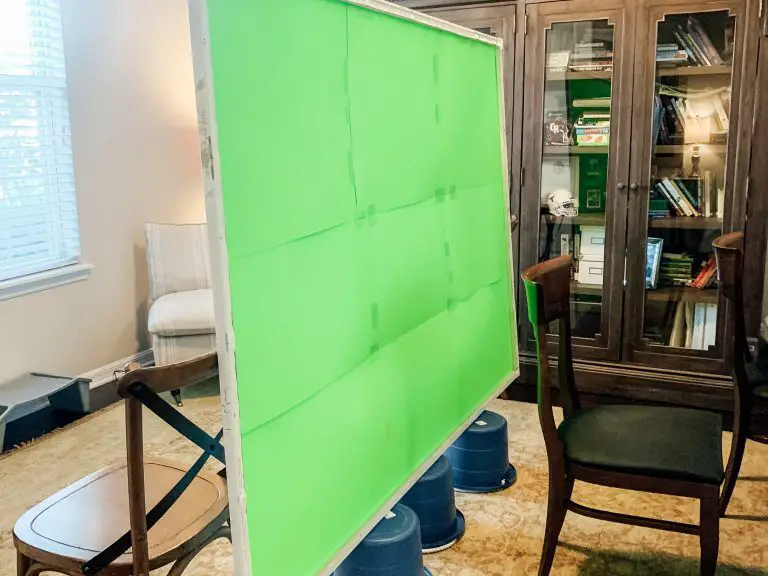
Remember when everyone slapped peel-and-stick wallpaper or faux bookshelves behind their desks to impress coworkers on Zoom? According to Real Simple, there was a massive spike in sales of peel-and-stick wall coverings and bookshelves in 2020 as people scrambled to create professional-looking home office backdrops. But now, with hybrid work as the norm and video calls far less formal, those over-staged walls feel out of touch. If your background still looks like a Pinterest board circa spring 2020, it’s time to let it go.
Try simplifying your space with real artwork or a neutral backdrop that reflects your current lifestyle. You’re not auditioning for HGTV every time you hop on a video call—your coworkers have seen your cat walk across the screen a dozen times. A calm, authentic setting feels fresher and more grounded. Bonus: fewer distractions for everyone.
2. Keeping an “Emergency” Stockpile of Toilet Paper
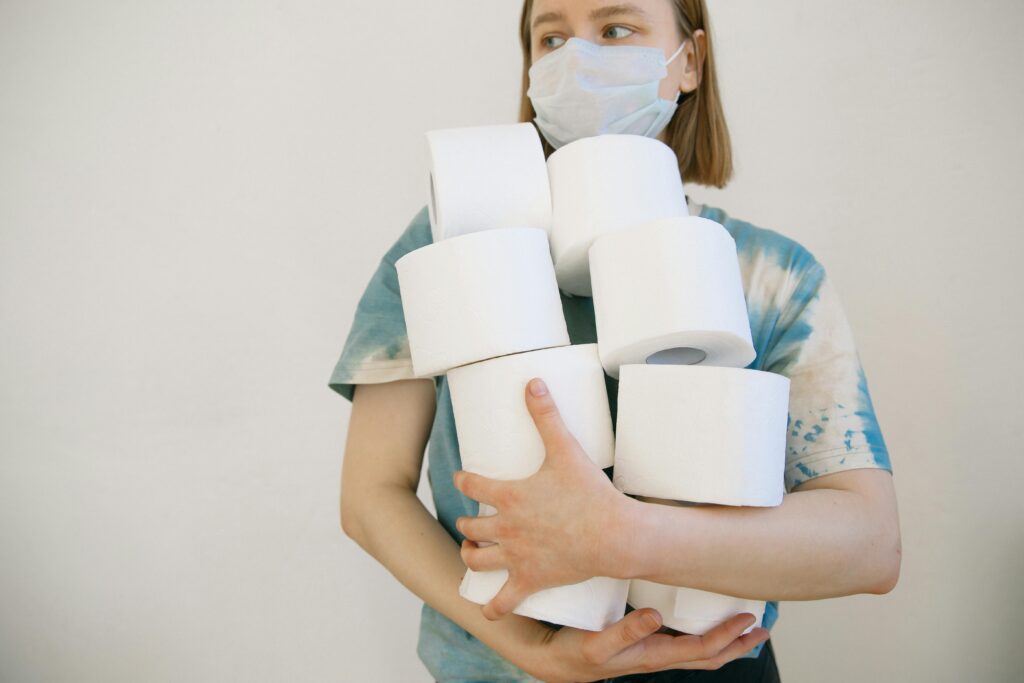
At the start of the pandemic, many households stockpiled essentials out of fear they’d run out. As noted by Business Insider, toilet paper sales skyrocketed by 845% in March 2020 alone. And while it made sense at the time, continuing to hoard dozens of rolls now just takes up space and feels a bit…panicky. Supply chains have stabilized, and stores haven’t run dry in years.
If you’re still dedicating an entire closet to bathroom tissue, it’s time to reassess. A backup pack or two is smart—anything more is just cluttering your storage. Think of how much more useful that space could be for linens or board games. You’ve moved on emotionally from 2020; your linen closet should too.
3. Using a Ring Light as Your Only Desk Lamp

Ring lights were a revelation during the height of remote work and social distancing. Everyone from TikTokers to CEOs grabbed one to look brighter and more polished on video calls. But according to Luvo, ring lights can strain the eyes when used as everyday lighting due to their harsh intensity and unnatural shadows. If it’s still your go-to light source for working late or answering emails, it might be time to switch it out.
Instead, try adding a stylish desk lamp with a warm, dimmable bulb that’s easy on your eyes. You’ll still look great on camera, but your retinas won’t be begging for mercy. It’s a simple switch that signals you’re not stuck in early-pandemic survival mode. And let’s be honest—you don’t need to look like a YouTuber just to send a Slack message.
4. Keeping Workout Equipment in Your Living Room

The home gym boom of 2020 saw yoga mats, resistance bands, and stationary bikes squeezed into every spare corner. As reported by The Washington Post, sales of home fitness equipment doubled during lockdown, with many people converting parts of their living rooms into makeshift studios. But now that gyms and studios are open again, your home doesn’t need to double as a Planet Fitness. That dumbbell rack next to your TV is sending very loud “quarantine vibes.”
If you’re still stepping over free weights to reach your couch, it’s time to reclaim your living space. Store your gear in a closet or roll it under the bed if you’re still using it. Otherwise, donate or sell what you no longer need. Your space should support the life you live today—not the one you pivoted to in isolation.
5. Displaying “In This House…” Signs
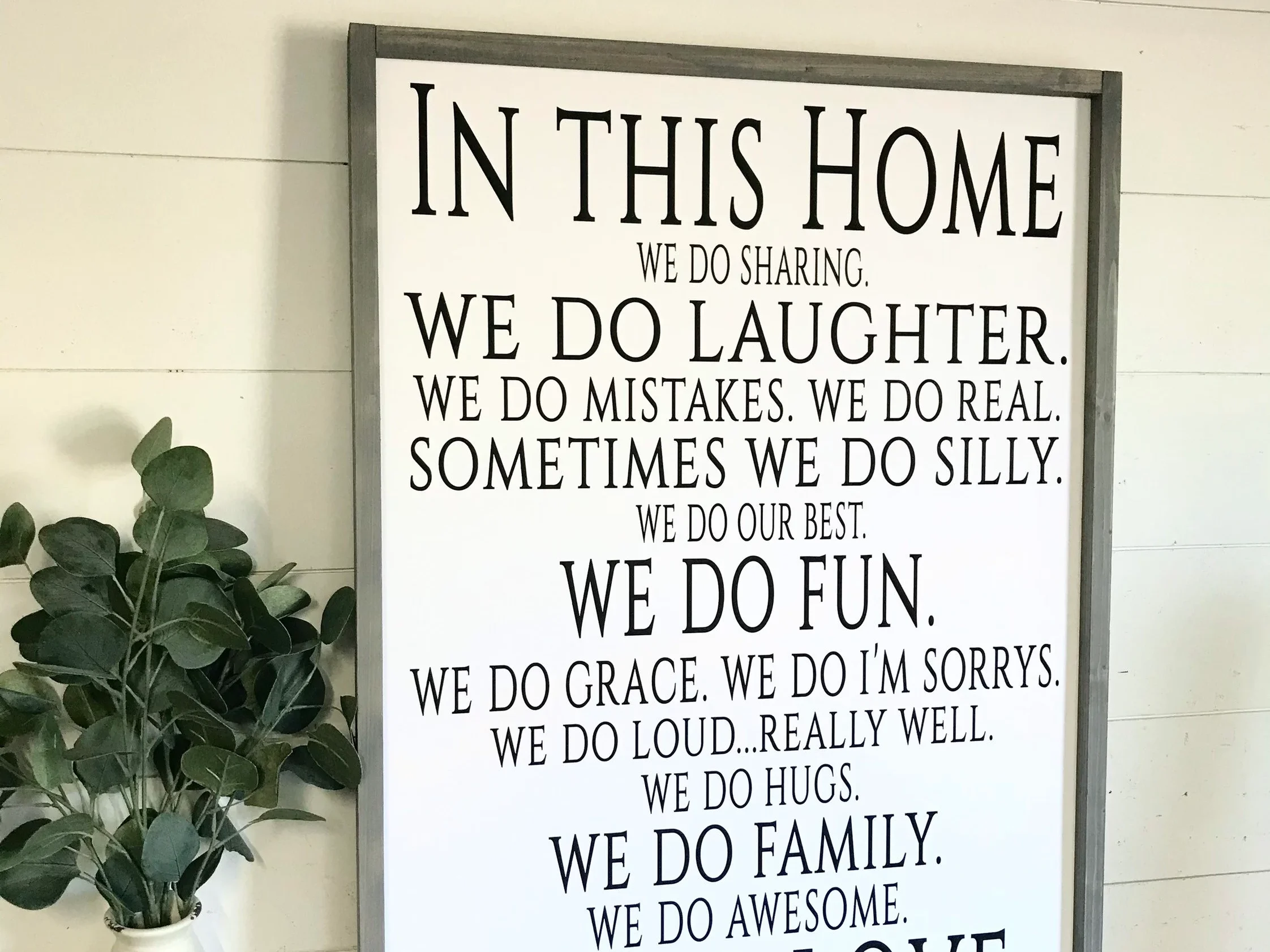
Those heartfelt signs listing virtues like kindness, science, and love were comforting when the world felt uncertain. But in 2025, their message feels a little worn out—not because the values are outdated, but because the aesthetic is. The same goes for all the mass-produced farmhouse-style decor that took over our walls. It’s no longer the era of distressed wood and overexposed slogans.
Try updating your wall art with something personal or visually fresh—maybe a piece from a local artist or a framed photo that actually sparks joy. Your home should reflect your evolution, not your Etsy shopping history from four years ago. Those signs served a purpose, but you’ve outgrown them. Let your home speak for who you are now, not just what got you through hard times.
6. Using a Folding Table as Your Desk

We all improvised when we first had to work from home, and many of us dragged out the folding table from the garage. But if you’re still typing on a wobbly surface meant for card games and Thanksgiving overflow, it’s time to graduate. Long-term discomfort isn’t a badge of resilience—it’s just bad ergonomics. Plus, it screams temporary solution to a long-term reality.
Upgrading to a real desk doesn’t have to cost a fortune. There are great options out there that are functional, stylish, and compact enough for small spaces. A quality desk says you’re committed to your current routine and deserve a comfortable work environment. Your back (and your video-call credibility) will thank you.
7. Having a Wall Calendar with All the 2020 Canceled Plans

If there’s still a calendar hanging in your kitchen with concerts and trips crossed out from 2020, it’s time to let it go. It might feel nostalgic or oddly grounding to keep it there, but it’s also a daily reminder of what didn’t happen. That kind of visual clutter has low-key emotional baggage. You deserve better than a shrine to cancellations.
Toss the old calendar and get one that reflects today’s plans and priorities. Whether it’s blank or full, it’s a fresh slate for your current reality. Even better, try a whiteboard or digital calendar for flexibility. Start focusing on what’s ahead instead of mourning what was missed.
8. Relying on Clorox Wipes Like It’s a Personality Trait
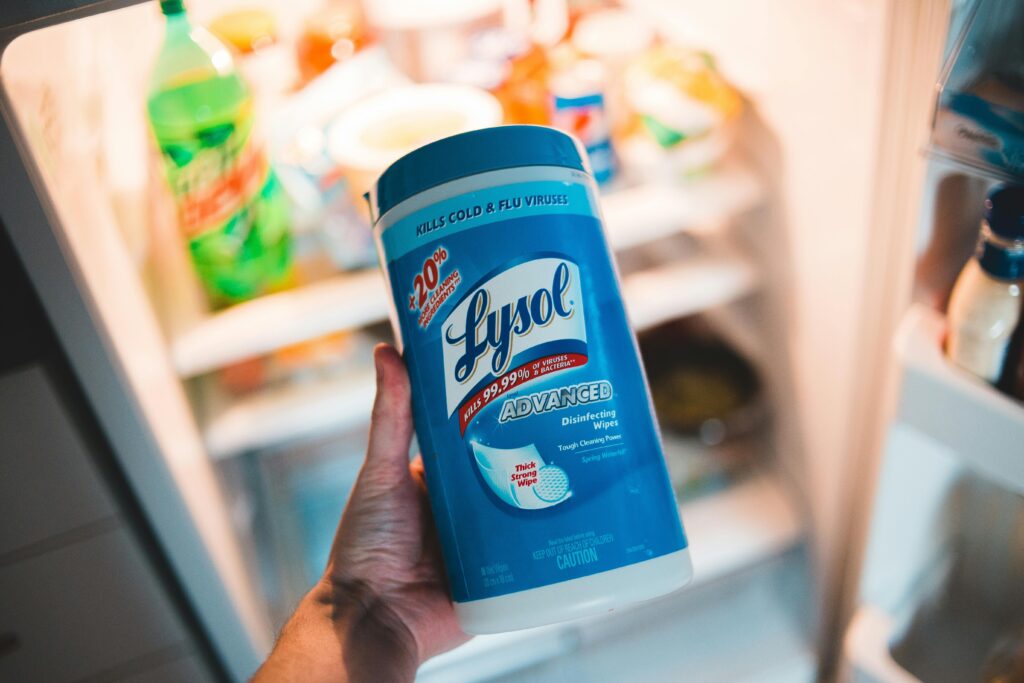
We’re all for good hygiene, but compulsively wiping down groceries and doorknobs with industrial-strength wipes feels a bit much now. The CDC has clarified that surface transmission of COVID-19 is unlikely and that air quality matters more. If you’re still going through tubs of disinfecting wipes weekly, you might be cleaning more out of habit than necessity. It’s time to reevaluate what’s really needed for a healthy home.
Keep a few wipes on hand for messes or when someone’s sick, but ease up on the daily over-sanitizing. Over-disinfecting can wear down surfaces and isn’t always more effective than soap and water. Focus on better ventilation or an air purifier instead. Clean smarter, not harder.
9. Keeping a “Quarantine Snack Bin”

That plastic bin labeled “quarantine snacks” might’ve been cute in 2020—but now it’s a sugary time capsule. We all needed comfort food while doomscrolling and avoiding the outside world. But if your snack game hasn’t evolved since then, you might be missing out on more balanced and satisfying choices. Plus, let’s be real—those granola bars expired in 2022.
Reboot your snack stash with whole foods, fun new flavors, or even a tiered snack tray for easy grazing. Your kitchen deserves an upgrade just like the rest of your life. Keep the snacks, lose the label—and maybe stop calling it a “COVID cupboard.” You’re not in lockdown anymore.
10. Having a “Mask Bowl” by the Front Door

That little basket or bowl overflowing with disposable masks, sanitizer, and gloves was once essential. But now it’s just a dusty relic that hasn’t been touched in months. If you still have a mask station set up like it’s 2021, it might be time to reconsider. Unless you’re immunocompromised or in a high-risk environment, you probably don’t need a dedicated PPE altar anymore.
Tuck a couple of masks in your bag or glove compartment, and move on. Reclaim that space for keys, sunglasses, or literally anything more current. It’s a small change that feels surprisingly refreshing. Let the entryway reflect the present, not the pandemic panic phase.
11. Showcasing Bread-Making Tools on Your Counter
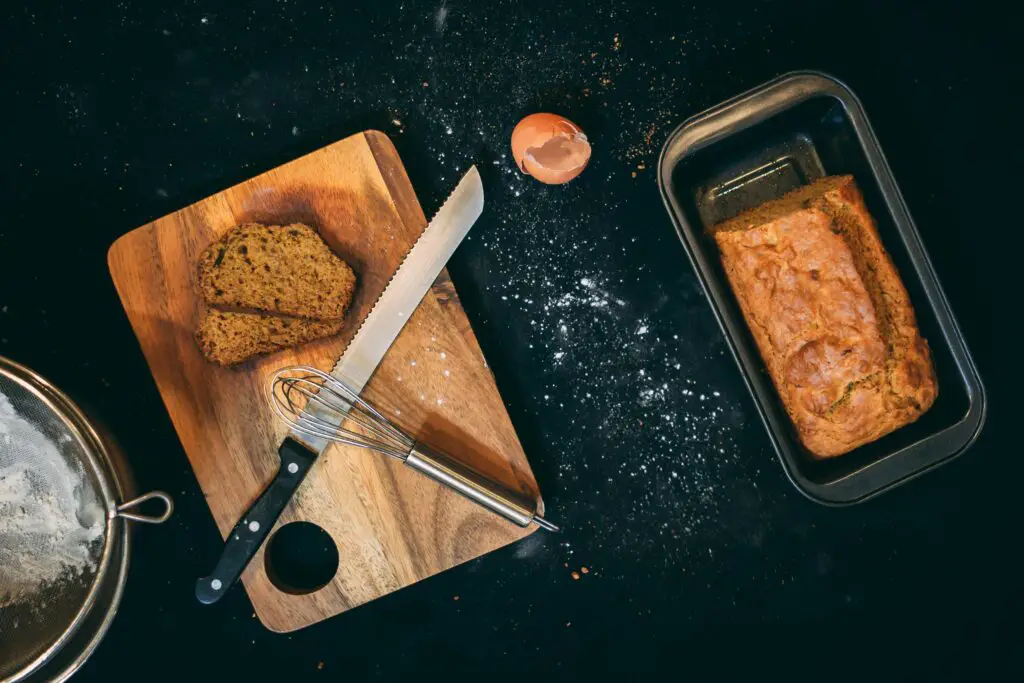
The sourdough starter. The Dutch oven. The banneton you used twice. These were all signs you were making it work in 2020.
But if they’re still taking up prime real estate in your kitchen—and you haven’t baked in months—it’s time to pack them away. Keep the tools, sure, but let your countertops breathe. Your kitchen should reflect what you actually use. And no, the guilt doesn’t taste like bread.
12. Hanging “Wash Your Hands” Signs in the Bathroom
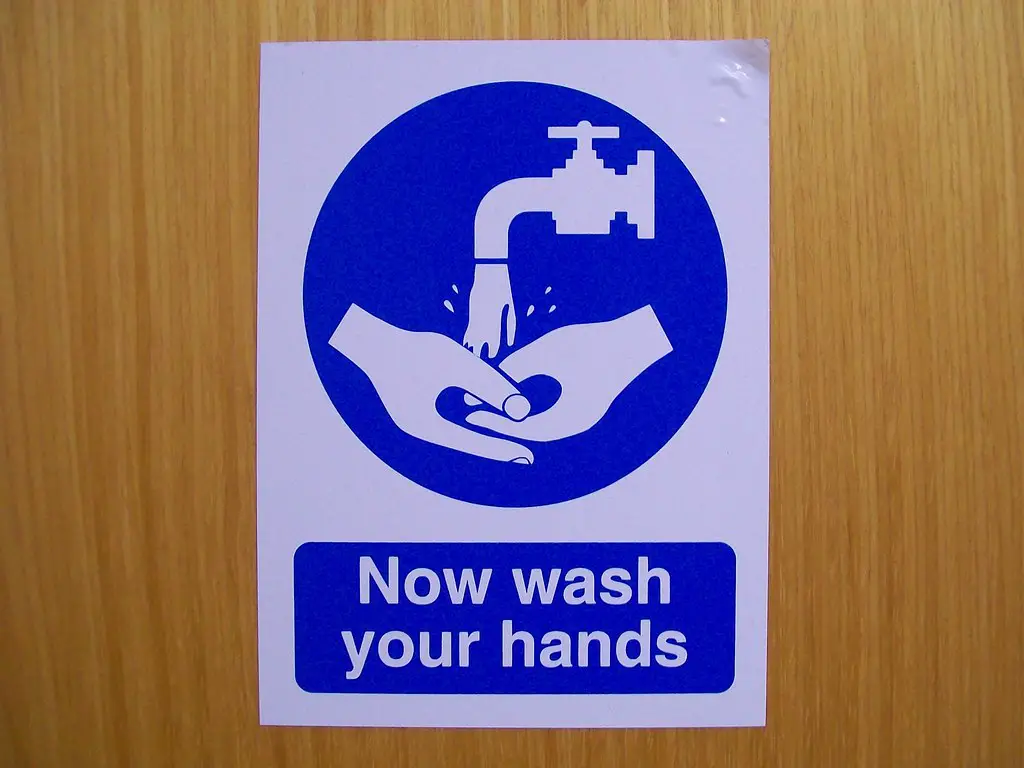
In 2020, we needed the reminder—and the decorative touch felt like a public health PSA with flair. But today, most people know to wash their hands without the wood-planked signage. If it still hangs there, it feels a bit performative, not practical. Your guests probably aren’t anti-handwashing rebels.
Swap the sign out for a nice print or a piece of real art. Better yet, let your soap and hand towels do the talking with color and quality. You’re not running a themed bathroom exhibit. Let go of the “crisis chic” look.
13. Living with a Half-Finished “Pandemic Project”

Whether it was a wall you meant to paint, a puzzle table that never moved, or a knitting kit collecting dust, unfinished pandemic projects haunt many of us. Starting something was how we coped—but never finishing it can become a silent stressor. It reminds you of burnout or boredom, not creativity. And visually, it’s just clutter.
Give yourself permission to finish it, donate it, or let it go altogether. If it doesn’t spark joy or usefulness now, it’s not worth the space. Your home is for the you who’s here now, not the version trying to fill time during lockdown. Free up your mental and physical real estate.
14. Having Multiples of Everything “Just in Case”
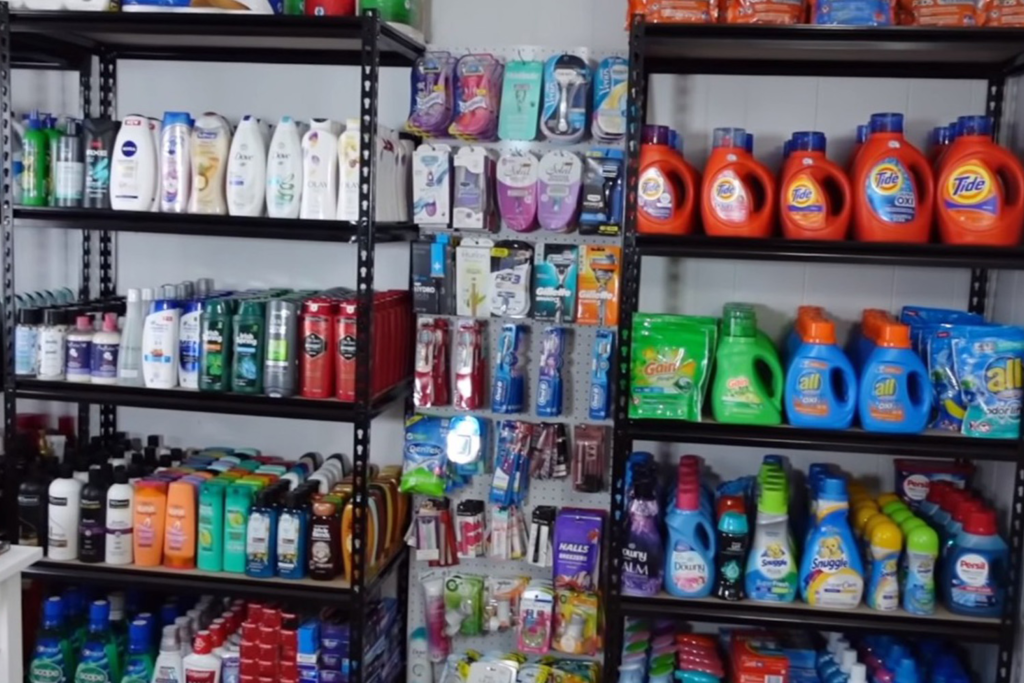
From thermometers to canned soup to hand soap, we doubled and tripled up on everyday items just in case. But most of us don’t need three backups of every product anymore. Instead of making you feel secure, it might be making your home feel cramped and chaotic. That sense of scarcity is no longer serving you.
Take inventory of your “just in case” drawers and trim them down. Donate unopened items, toss expired goods, and keep only what you truly use. You’re not prepping for the end of days—you’re curating a home that reflects balance. And that’s something worth making space for.
